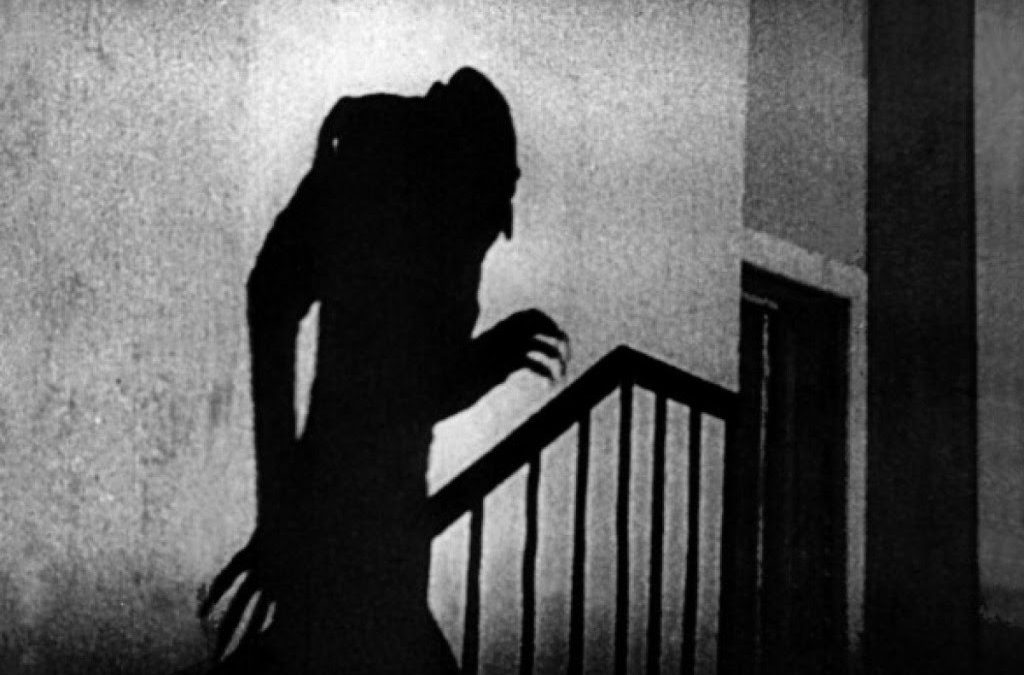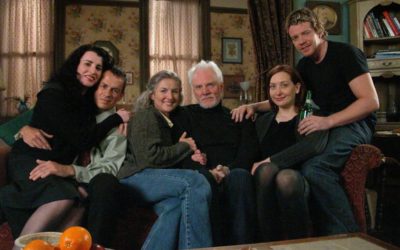The Halloween season has come once again, and a common tradition for many people during this time of the year is to sit back and watch one of their favorite horror or Halloween themed movies. There are far too many of these films to count, ranging from older favorites like “Psycho” or any of the Universal Monster movies to more recent favorites like “The Addams Family” and “The Cabin in the Woods”. However, most of these films tend to have been made here in the United States; there’s nothing inherently wrong with that, but the preference for these films means that films made elsewhere in the world tend to be overlooked, despite being of similar high quality. So in order to fix this and bring some much needed attention to films that might not otherwise receive it, we’re going to tour the globe and highlight some of our favorite foreign Halloween movies. Without further ado, here are the ones that we enjoy most:
Nosferatu (1922) – almost a decade before Universal released their cinematic Dracula, this German film took Bram Stoker’s horrific tale and brought it to life in all its terrifying glory (albeit with names changed in order to avoid copyright infringement). Directed by German auteur F.W. Murnau and starring Max Schreck as the nefarious Count Orlock, this silent-era horror was a pioneer of the German expressionist movement, employing imagery that strayed from realism in order to invoke a sense of dread and suspense. Nearly a hundred years later, it remains an underrated classic of the horror genre, and can be found here among the many other amazing titles from World Wide Motion Pictures.
Diabolique (1955) – if there were any director to serve as the French equivalent of British cinematic icon Alfred Hitchcock, it would have to be Henri-Georges Clouzot, with this film in particular coming across as a unique re-imaging of Hitchcock’s beloved suspense thrillers. The film depicts the wife and mistress of a school headmaster who’s anything but loving to either of them (or anyone else for that matter), who take action to murder the sadistic principal and go to great lengths to cover their tracks. That proves to be much easier said than done though, and what follows is a string of sightings that raise skepticism over the headmaster’s “death”. The result: one of the most unnerving films French cinema has to offer.
Black Sunday (1960) – having previously worked in the Italian film industry as a cinematographer, Mario Bava shines with his first film as a director, one that remains one of the great classics of European cinema. In its depiction of a witch rising from the grave and seeking revenge against those who had wronged her, the film’s story could’ve easily fallen into camp territory and become difficult to take seriously. However, thanks to some amazing black-and-white visuals (Bava’s history as a cinematographer is put to good use) and a solid performance from leading actress Barbara Steele, the film ends up being a masterpiece, and the first of many great Italian horror films.
Who Can Kill a Child? (1976) – several years before Stephen King brought terror to the literary world with “Children of the Corn”, Spanish director Narciso Ibáñez Serrador introduced his own interpretation of a world where adults are absent and children have a disturbing amount of control. As it follows a young couple trapped on an island near Spain and forced to evade the island’s child population – one that has murdered all the adults and seeks more victims – Serrador’s cinematic achievement brings to mind the likes of George A. Romero’s zombie pictures through their eerie tone and atmosphere, while also serving as a painful reminder of the lifelong effects war can have on even the youngest of individuals.
Cronos (1993) – films like Pan’s Labyrinth and The Shape of Water may have made Guillermo del Toro a household name, but it was this lower-budget work of horror that kicked off what would come to be a prosperous career for the Mexican filmmaker. Set in del Toro’s home nation, the film follows an antiques dealer and his granddaughter who discover a centuries-old statuette that possesses the power to grant immortality; it sounds like a dream come true, but it isn’t long before the whole ordeal becomes their worst nightmare. Compared to del Toro’s works, this film may appear to be a little rough around the edges, but it nonetheless makes for a solid directorial debut for one of Mexico’s most acclaimed filmmakers.
Suicide Club (2001) – Japan is no stranger to the horror genre (some of there films, like Pulse and The Grudge, have even been given the remake treatment for American audiences), but the island nation has never made anything quite like this absurd, but alarming examination of the country’s generational gap. Through its combination of mass suicides and teen pop stars whose songs have brainwashing abilities, the film never falls short in creating truly disturbing imagery while also raising questions about the insane circumstances that contribute to such events. It might be difficult for some to get past the film’s discomforting opening sequence, but for those who do, it only gets crazier from there.
The Silent House (2010) – the key to success for many great horror films is the ability to make those watching the film feel as if they are actually present in the suspenseful events they are witnessing on the screen. This Uruguayan film attempts to invoke such a feeling by constructing its narrative in a way that makes the story look as if it were shot completely in one take, giving it an almost documentary-like aesthetic. Such a task is not easy to pull off, but director Gustavo Hernandez manages to succeed in this daunting challenge, and while the story itself may differ little from most haunted house films, Hernandez’ direction and lead actress Florencia Calucci elevate the film into being anything but conventional.




